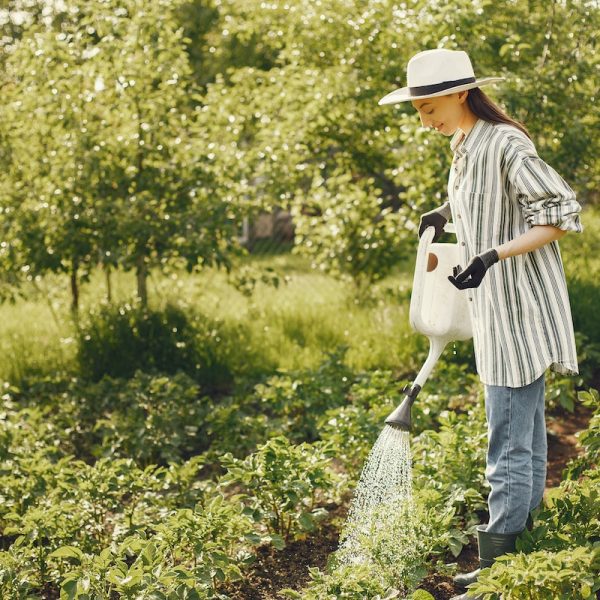In recent times, gardening has witnessed an extraordinary surge in interest, with reports highlighting a significant boom in this area. Astonishingly, a survey reveals that 18.3 million new gardeners have joined the green movement. However, as this trend thrives, some individuals find it challenging to embrace this hobby due to the complexities of traditional gardening methods.
Enter the revolutionary concept of Aeroponics Systems – a game-changer in urban gardening. It provides a modern take on the traditional gardening practice, which promises to be an effective solution for burgeoning gardeners.
DIY Aeroponics Systems presents an enticing opportunity for creative souls yearning for outdoor adventures and eager to nurture their own green sanctuaries. These systems empower enthusiasts to craft personalized solutions, fostering a deeper connection with nature and their greenspace. So, whether you’re an aspiring gardener or an experienced horticulturist seeking innovation, aeroponics promises a thriving urban gardening experience like never before.
- Understanding Aeroponics
- Advantages of DIY Aeroponics Systems
- Components of a DIY Aeroponics System
- Building Your DIY Aeroponics System
- Choosing Plants for Your Aeroponics Garden
- Maintenance and Care
- Tips for Successful Aeroponic Gardening
- Urban Gardening and Sustainability
- DIY Aeroponics Projects Around the World
Understanding Aeroponics
Aeroponics is an advanced plant cultivation method that differs from traditional hydroponic systems. Unlike hydroponics, which uses water as the medium for delivering nutrients to plant roots, aeroponics employs a fine mist or aerosol to nourish the plants. The roots are suspended in air and receive a nutrient-rich spray at regular intervals, ensuring optimal absorption and promoting rapid growth. By harnessing the power of mist, aeroponics revolutionizes urban gardening, offering a space-saving and highly effective solution for cultivating a wide variety of plants.
Advantages of DIY Aeroponics Systems
DIY Aeroponics Systems offer a plethora of advantages over traditional soil gardening and other hydroponic methods, making them an attractive option for urban gardeners and plant enthusiasts. Here are some key advantages you can expect:
- Faster Growth and Higher Yields: Aeroponics promotes accelerated plant growth due to the direct supply of nutrients to the roots. According to a study published in 2018, aeroponically grown lettuce showed significantly higher growth rates and yielded more produce compared to traditional soil cultivation.
- Water Efficiency: DIY aeroponics systems utilize water more efficiently than traditional gardening or some hydroponic techniques. With mist-based nutrient delivery, water usage is minimized. A National Aeronautics and Space Administration report states that aeroponics can reduce water consumption by up to 98% compared to soil-based cultivation.
- Space-Saving: Aeroponics is ideal for urban gardening, where space constraints are common. By suspending plants in the air, aeroponic systems optimize vertical space utilization. Research conducted at the University of Mississippi found that aeroponics allowed for a 3-fold increase in plant density compared to soil gardening in limited spaces.
- Reduced Disease Risks: DIY aeroponic systems eliminate soil-borne pathogens, reducing the risk of plant diseases. This creates a healthier environment for plants, enhancing their overall vitality and longevity.
- Enhanced Nutrient Uptake: With direct nutrient misting on the roots, plants in aeroponic systems efficiently absorb essential elements. Studies published in Plant Factory Basics, Applications, and Advances demonstrate that aeroponically grown crops exhibit higher nutrient content , providing healthier and more nutritious produce.
- Continuous Harvesting: DIY aeroponics systems allow for continuous harvesting, enabling gardeners to pick mature leaves or fruits as needed without uprooting the entire plant. This ensures a steady supply of fresh produce throughout the growing season.
Components of a DIY Aeroponics System
Aeroponics systems provide an innovative and efficient way to grow plants without soil. Several essential components come into play to create a successful DIY aeroponics setup, each contributing to the system’s overall effectiveness.
Reservoir and Pump

The reservoir is a crucial component in a DIY aeroponics system, responsible for storing the nutrient solution that nourishes the plants’ roots. It ensures a constant supply of nutrients for healthy growth. Choosing an appropriate water pump is essential to create the fine mist that will feed the plant roots. Submersible water pumps are commonly used, and their capacity should match the size of the system and the number of spray nozzles.
Spray Nozzles and Misters
Spray nozzles and misters are crucial components in aeroponic systems, responsible for delivering a nutrient-rich mist to plant roots. Creating a fine mist is vital to ensure efficient nutrient absorption and robust plant growth. The tiny droplets generated by spray nozzles envelop the roots, providing a highly oxygenated and nutrient-dense environment, promoting rapid and healthy development.
Various types of misters are commonly used in DIY aeroponics projects. Ultrasonic misters use high-frequency vibrations to atomize the nutrient solution, producing an ultra-fine mist. Pneumatic misters utilize air pressure to break up the liquid into small droplets. Pressure nozzles force the solution through a tiny orifice, generating a fine spray.
To install misters, position them evenly along the length of the PVC pipes, ensuring all plant roots receive equal coverage. Proper nozzle placement guarantees a consistent mist distribution, maximizing nutrient uptake and overall system efficiency. Regular maintenance, such as cleaning and unclogging nozzles, ensures uninterrupted misting for successful aeroponic gardening.
Growing Chamber and Plant Holders
The growing chamber is the core of the aeroponic system, housing the suspended plant roots. Constructing the chamber from durable, light-blocking materials ensures a controlled and protected environment. Plant holders, like net pots or neoprene collars, securely hold the plants in place while allowing their roots to access the nutrient mist freely. Choosing the right plant holder depends on the plant species and system design.
Nutrient Solution
Preparing a balanced nutrient solution is crucial for successful aeroponic cultivation. A well-formulated nutrient mix should contain all essential macro and micronutrients, promoting healthy plant growth. Regular monitoring of nutrient levels is necessary to prevent imbalances that may hamper plant development. Adjustments can be made based on the growth stage and specific plant requirements. Maintaining proper nutrient solution management ensures thriving and productive plants in the DIY aeroponics system.
Building Your DIY Aeroponics System

Building your DIY aeroponics system is an exciting and rewarding endeavor, offering a space-efficient solution for urban gardening. Follow this step-by-step guide to create your very own vertical aeroponics system:
- Design and Planning: Determine the size and shape of your vertical aeroponics system based on available space and the number of plants you want to grow. Sketch out the design, considering factors like ease of maintenance and access to light.
- Materials and Components: Gather the necessary materials, including a reservoir, water pump, spray nozzles, PVC pipes, plant holders (net pots or neoprene collars), and a growing chamber. Ensure the components are of high quality and suitable for your chosen plant types.
- Reservoir and Pump Setup: Place the reservoir at the base of your system and install the water pump inside it. Connect the pump to the PVC pipes that will deliver the nutrient solution to the spray nozzles.
- Spray Nozzles Placement: Position the spray nozzles along the length of the PVC pipes. The nozzles should evenly distribute the nutrient mist over the plant roots. Secure them firmly in place.
- Construct the Growing Chamber: Assemble the growing chamber, ensuring it provides a dark and protected environment for the plant roots. The chamber should allow enough space for the plant holders to suspend the plants.
- Plant Holders Installation: Place the plant holders (net pots or neoprene collars) into the growing chamber, ensuring they are securely fixed and can hold the plants in place.
- Connect Components: Connect the PVC pipes carrying the nutrient solution to the spray nozzles. Check for leaks and ensure a proper flow of the mist.
- Nutrient Solution Preparation: Mix and prepare the nutrient solution according to the specific needs of your chosen plants. Maintain the correct nutrient levels by regularly monitoring and adjusting the solution.
- Planting: Carefully transplant your chosen plants into the plant holders, ensuring the roots are suspended within the growing chamber.
- Test and Monitor: Switch on the water pump and observe the misting process. Regularly monitor the system to ensure it functions correctly and that the plants receive adequate nourishment.
Choosing Plants for Your Aeroponics Garden
When choosing plants for your aeroponics garden, it’s essential to select varieties that thrive in soilless environments and are well-suited for aeroponic cultivation. Here are some considerations and examples of popular plants to grow in your DIY aeroponics system:
- Compact Growth: Opt for plants with a compact growth habit to make the most of limited space in your aeroponics setup.
- Shallow Roots: Plants with shallow root systems are ideal for aeroponics, as they can efficiently absorb nutrients from the misted environment.
- Fast-Growing: Choose plants that have a relatively quick growth cycle to enjoy a continuous harvest throughout the growing season.
- High-Yield Varieties: Select high-yield varieties to maximize the productivity of your aeroponic garden.
Examples of Plants for DIY Aeroponics Systems
- Herbs: Basil, cilantro, mint, oregano, and parsley are popular choices. They grow well in aeroponics systems and provide a fresh and aromatic addition to your culinary adventures.
- Leafy Greens: Lettuce varieties like romaine, butterhead, and leaf lettuce flourish in aeroponics. Spinach, kale, and arugula are excellent options, offering nutrient-packed greens for your salads and smoothies.
- Strawberries: These compact, low-growing fruits adapt well to aeroponic cultivation, producing abundant sweet and juicy berries.
- Cherry Tomatoes: Compact and prolific, cherry tomatoes thrive in aeroponic systems, delivering a steady supply of delicious, bite-sized fruits.
- Flowers: Ornamental plants like petunias, marigolds, and impatiens can be grown for their vibrant blooms, adding a touch of beauty to your aeroponic garden.
- Peppers: Compact pepper varieties, such as chili peppers or bell peppers, can be successfully grown in aeroponics systems, providing a homegrown source of spicy or sweet delights.
Maintenance and Care
Regular maintenance and care are essential to ensure the health and efficiency of your aeroponics system. Tasks include monitoring nutrient levels, checking water pump functionality, and cleaning spray nozzles to prevent clogs. Inspecting plant health, pruning, and removing dead leaves help maintain a thriving garden.
Troubleshooting common issues, such as uneven misting or nutrient imbalances, requires adjusting nozzle positions or nutrient solution ratios. Regularly inspecting the system for leaks, pests, or diseases allows for timely intervention. By staying vigilant and addressing potential problems promptly, you’ll create a flourishing and productive aeroponics garden.
Tips for Successful Aeroponic Gardening
For successful aeroponic gardening, maintain a clean and sterile system to prevent pathogens. Regularly monitor nutrient levels, pH, and water temperature to ensure optimal plant health. Position misting nozzles strategically for even coverage. Choose appropriate plants with shallow root systems and fast growth rates.
Success stories from DIY aeroponic gardeners abound, with urban gardeners growing abundant herbs, lettuce, and strawberries year-round. Reports highlight increased yields, reduced water usage, and vibrant, healthy plants, showcasing the potential of aeroponic systems as a sustainable and efficient gardening solution. With dedication and attention to detail, your DIY aeroponic garden can flourish too.
Urban Gardening and Sustainability

Urban gardening and DIY aeroponics play a pivotal role in fostering sustainability in urban areas. Transforming unused spaces into green havens mitigates urban heat islands and improves air quality. Aeroponics, with its water-efficient and soilless approach, reduces water usage and waste, making it an eco-friendly alternative to traditional gardening methods.
In urban settings, where space is limited, aeroponics allows year-round cultivation of fresh produce, reducing reliance on transported goods and cutting carbon emissions. Embracing urban gardening and DIY aeroponics empowers city dwellers to embrace sustainable living, promoting greener, healthier, and more environmentally conscious communities.
DIY Aeroponics Projects Around the World
DIY aeroponics projects are sprouting worldwide, from bustling metropolises to rural communities, exemplifying innovation and sustainability. Urban gardeners across the globe have harnessed the power of mini aeroponics to grow fresh produce in limited spaces. In Rwanda , enthusiastic DIYers have created vertical aeroponics systems, bolstering food security and community resilience. Success stories abound, with individuals sharing their experiences and showcasing abundant harvests from their homemade aeroponics setups. These projects exemplify the ingenuity and creativity of individuals embracing DIY aeroponics, transforming urban environments, and promoting a greener and healthier future.
DIY aeroponics systems present many advantages for urban gardening enthusiasts, from faster growth rates and water efficiency to space-saving solutions and reduced disease risks. Embracing this innovative method empowers individuals to cultivate green sanctuaries, regardless of limited urban spaces.
By delving into aeroponic gardening, readers can embark on a journey towards sustainable urban living, contributing to greener cities and a healthier planet for generations to come. So, don’t hesitate to seize the opportunity to nurture urban gardens and become champions of sustainability in the community. Happy gardening!




